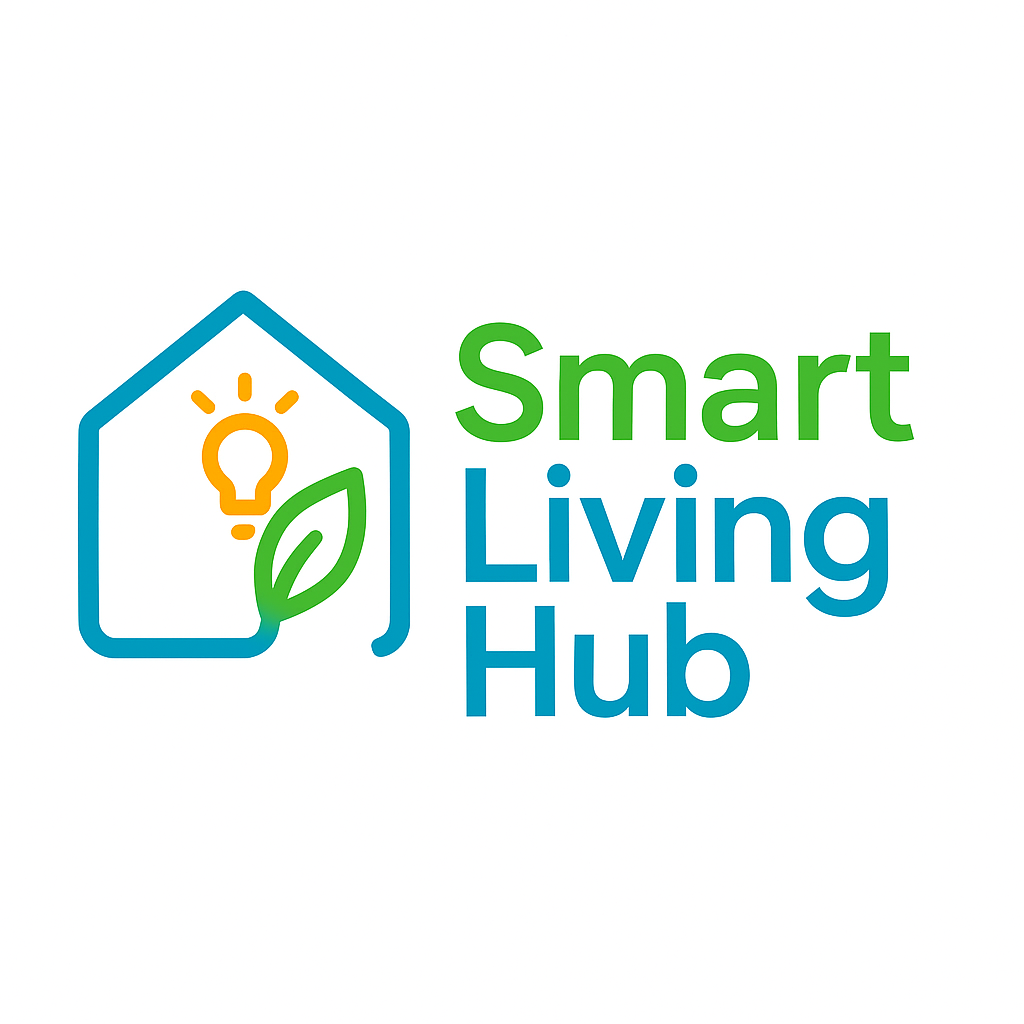Utility costs continue to be a significant concern for households across the U.S., prompting many to seek effective solutions. In 2023 alone, Americans invested over $8.8 billion in energy efficiency upgrades, highlighting a growing commitment to smart energy management. With thoughtful strategies, you can significantly reduce your utility bills, lower energy expenses, and positively impact the environment in 2025. This guide shares seven research-backed habits, offering simple steps and practical examples for tangible savings.
Why Energy-Saving Habits Matter in 2025
Rising utility rates mean the average U.S. household spends more than $2,200 annually on home energy. Implementing smart, effective energy-saving tips can help you cut utility bills by hundreds of dollars each year. States like California, Vermont, and Massachusetts demonstrate that eco-friendly habits are not just trends, but powerful ways to reduce both costs and emissions. Discover more about state-level energy efficiency efforts.
Energy efficiency also plays a vital role in job creation. Over two million Americans now contribute to this expanding sector. By embracing energy efficiency at home, you support your personal finances and contribute to a healthier planet. Small adjustments accumulate into substantial savings and a greener future for everyone.
Habit 1: Upgrade to Energy-Efficient Appliances
Older appliances often consume more power than anticipated. Replacing them with models that meet or exceed federal ENERGY STAR standards is a proven method to reduce energy costs. You could save up to $500 annually by making these strategic upgrades to your home.
Implementation Steps for Appliance Upgrades
Start by auditing your current appliances and prioritizing replacements based on age and energy consumption. Always look for ENERGY STAR and other high-efficiency certifications when making new purchases. Explore available utility rebate programs, which can help offset the initial investment. Remember to responsibly recycle or dispose of your old appliances to minimize environmental impact.
Expected Cost Savings from Efficient Appliances
Upgrading major appliances like your refrigerator or washing machine can often pay for itself within a few years through reduced utility bills. For instance, an ENERGY STAR certified washing machine can use about 25% less energy and 33% less water compared to conventional models, leading to notable savings.
Environmental Impact of Appliance Upgrades
Switching to high-efficiency appliances contributes significantly to environmental protection. Each device upgrade helps prevent over 100 pounds of carbon emissions annually. Furthermore, using efficient appliances during peak demand times can help stabilize the energy grid for your community.
Habit 2: Utilize Smart Home Devices
Smart thermostats, plugs, and lighting controls offer unparalleled command over your home’s energy use. These devices can automatically adjust settings when you are away, leading to substantial savings. While they represent an initial investment, the long-term cost reductions quickly accumulate.
Implementation Steps for Smart Home Integration
Begin by installing a programmable smart thermostat to optimize your heating and cooling schedules. Employ smart plugs and power strips for electronic gadgets prone to standby power consumption. Establish automated schedules for your lighting and climate control systems. Regularly enable remote monitoring to quickly identify and address any unexpected energy surges.
Expected Cost Savings with Smart Devices
Smart thermostats alone can reduce heating and cooling costs by 10-15%. If your household spends around $1200 per year on HVAC, this translates to $120-$180 back in your pocket annually. These devices empower you to manage energy more effectively.
Environmental Impact of Smart Home Technology
By reducing energy demand during peak times, smart home devices help alleviate strain on the energy grid. Every kilowatt-hour saved measurably shrinks your household’s carbon footprint, contributing to a more sustainable energy ecosystem. Always remember to check for firmware updates monthly to ensure your smart devices operate at peak efficiency.
Habit 3: Enhance Building Insulation
Poor insulation allows energy to escape through walls, windows, and roofs, forcing your heating and cooling systems to work harder. Improving your home’s insulation, particularly in attics and crawl spaces, can drastically lower your monthly utility bills.
Implementation Steps for Better Insulation
Conduct a professional or do-it-yourself evaluation to identify any cold spots or areas of heat loss in your home. Consider adding insulation to your attic, walls, and basement floors for comprehensive coverage. Seal all windows and doors with weatherstripping and caulking to prevent drafts. Additionally, insulate water heaters and exposed pipes to retain heat more effectively.
Expected Cost Savings from Enhanced Insulation
Proper insulation can reduce your heating and cooling costs by up to 20%, especially beneficial in climates with extreme temperatures. This improvement acts as a long-term investment that continually yields savings throughout the year.
Environmental Impact of Insulation Improvements
Insulating your home decreases your reliance on fossil fuels by reducing the overall energy needed for heating and cooling. Many state-level programs often offer rebates; check your local utility’s website for potential savings opportunities.
Habit 4: Implement Energy-Efficient Lighting
Incandescent bulbs are quickly becoming obsolete due to their inefficiency. Light Emitting Diodes (LEDs) offer the same brightness while consuming up to 75% less energy, making them a superior choice for modern homes.
Implementation Steps for Efficient Lighting
Replace all older, less efficient bulbs in your fixtures with modern LED models. For areas with infrequent foot traffic, install occupancy sensors or timers to ensure lights are only on when needed. Consider integrating smart bulbs for advanced automation and energy monitoring capabilities, offering even greater control.
Expected Cost Savings from LED Lighting
The average home can save approximately $225 each year simply by switching to LED lighting. This simple change offers immediate and ongoing financial benefits, making it one of the quickest ways to reduce your electricity bill. Learn more about the savings from LED lighting.
Environmental Impact of LED Lighting
LEDs are not only energy-efficient but also incredibly durable, lasting 15-25 times longer than traditional incandescent bulbs. This longevity significantly reduces landfill waste and helps prevent mercury contamination. When selecting LEDs, focus on lumens (brightness) rather than watts to ensure you get the appropriate light output without using excessive energy.
Habit 5: Use Power Strips
Many electronic devices consume power even when they are turned off, a phenomenon known as “phantom” energy load. TVs, computers, gaming consoles, and chargers all contribute to this hidden drain. Plugging these items into power strips and switching them off when not in use is a simple way to eliminate this waste.
Implementation Steps for Power Strip Usage
Organize your electronics by usage, such as office equipment, entertainment systems, or kitchen appliances. Opt for advanced power strips that can automatically cut power to devices when they are not actively needed. Educate everyone in your household about this habit. Setting reminders to switch off power strips before bedtime or leaving home can help solidify this routine.
Expected Cost Savings from Power Strips
Phantom load can add $100 or more to your annual electric bill. Effectively using power strips can virtually eliminate these hidden costs, providing a straightforward path to significant savings.
Environmental Impact of Reducing Phantom Load
If every household adopted the habit of cutting off phantom load, the collective effort could reduce emissions equivalent to removing hundreds of thousands of cars from the road. Consider using color-coded power strips for different rooms to streamline your routine and make energy management even easier.
Habit 6: Conduct Regular Energy Audits
Even minor inefficiencies can accumulate over time, leading to higher utility bills. An energy audit, whether performed by a professional or as a DIY project, can pinpoint hidden energy leaks and help you prioritize necessary upgrades.
Implementation Steps for Energy Audits
Utilize your utility company’s free or low-cost energy audit services, which often provide valuable insights. Thoroughly inspect windows, insulation, ducts, and appliances for any signs of inefficiency. Create a comprehensive list of needed upgrades and address the most impactful items first to maximize your savings. Plan to re-audit your home every 2-3 years, and certainly after any major changes or renovations.
Expected Cost Savings from Energy Audits
Homes that actively address findings from energy audits typically see a 5-30% reduction in their annual energy bills. This proactive approach ensures you are targeting the most critical areas for improvement, leading to substantial and consistent savings.
Environmental Impact of Regular Audits
A more efficient home continually reduces its consumption of resources, leading to compounding environmental benefits year after year. Skipping the audit step before making changes can mean overlooking the biggest savings opportunities.
Habit 7: Leverage Renewable Energy Sources
Solar panels are more accessible and affordable than ever before, with many homeowners benefiting from federal and state incentives. Even without installing panels, you can support renewable energy by purchasing renewable energy credits from your utility provider, further shrinking your household’s carbon footprint.
Implementation Steps for Renewable Energy
Research your eligibility for solar or wind incentives available in your state. Obtain quotes from reputable local solar installers to understand your options and costs. If direct installation isn’t feasible for your property, explore community solar programs. Additionally, consider purchasing renewable energy credits directly from your power provider to support green energy initiatives.
Expected Cost Savings from Renewables
Solar panel owners can potentially lower their electricity bills by $600 to $1200 per year, depending on factors like usage patterns and sun exposure. This long-term investment not only saves money but also provides energy independence.
Environmental Impact of Renewable Energy
Switching to renewable energy sources dramatically slashes your household’s greenhouse gas emissions, often by several tons each year. Many states, including California and Massachusetts, offer special rates or programs for renewable energy, so be sure to inquire with your provider.
How Much Can You Save with These Habits?
Adopting just four to five of these energy-saving habits could reduce your utility bills by 20-40%. For a typical family, this translates to annual savings of between $500 and $1,000. When combined with available incentives for upgrades, your first year’s savings could potentially cover a significant portion, or even all, of your initial investments.
While actual results may vary based on your home’s age, location, and lifestyle choices, the benefits of these habits are consistently observed nationwide. States like Vermont and Massachusetts lead the U.S. in efficiency, demonstrating that widespread adoption brings bigger rewards. Read more about efficient states.
Getting Started: Your Energy-Saving Action Plan
Ready to begin your journey to lower utility bills? A simple action plan can guide your efforts.
Step-by-Step Blueprint
1. Evaluate your current energy consumption habits to identify areas for improvement.
2. Choose two easy changes to implement this month, such as swapping to LEDs or adding power strips.
3. Schedule an energy audit within the next 30 days to uncover hidden inefficiencies.
4. Research available rebates for appliances or solar installations in your local area.
5. Set a monthly goal to incorporate another energy-saving habit into your routine.
By checking in monthly and tracking your progress, you’ll observe your bills decrease while your environmental impact shrinks.
FAQ: Energy-Saving Habits for 2025
How can I cut my utility bills by 20% or more?
Adopt at least four of the habits detailed in this guide, prioritizing upgrades to insulation and appliances. Monitor your usage with smart tools and combine these efforts with state rebates for maximum impact.
What are the easiest energy-saving habits to start with?
Begin with low-cost steps that offer immediate savings, such as switching to LED lighting, utilizing power strips, and adjusting your thermostat settings strategically.
How long does it take to see savings from energy-efficient habits?
Some habits, like replacing incandescent bulbs with LEDs or using power strips, will show results as early as next month. Major upgrades, such as new appliances or improved insulation, typically yield savings within six to twelve months.
Are energy-saving habits worth the effort?
Absolutely. The benefits extend beyond bill reduction to significant environmental advantages. Most homeowners can recoup their initial expenses within two years or less, making these habits a wise investment.
What’s the most effective way to reduce electricity costs?
Focus on addressing high-energy appliances and improving your home’s insulation first. Then, automate your energy management with smart devices to achieve the most substantial savings.
How much can the average household save with these habits?
Savings typically range from $500 to over $1,000 per year. The exact amount depends on your starting energy consumption and which habits you choose to adopt and maintain.
Do energy-saving habits really make a difference for the environment?
Yes, they do. The combined effect of millions of individuals adopting energy-saving practices significantly lowers emissions and plays a crucial role in mitigating climate change.
Conclusion & Next Steps
By integrating these seven energy-saving habits into your 2025 routine, you are poised to cut utility bills, support a sustainable future, and establish long-term financial savings. Utilize available checklists and calculator tools to track your progress. For ongoing tips and expert guidance, consider subscribing to our newsletter or booking a free consultation today. Explore our related articles for more information on rebates, climate-specific advice, or state programs, and start saving smarter now!




